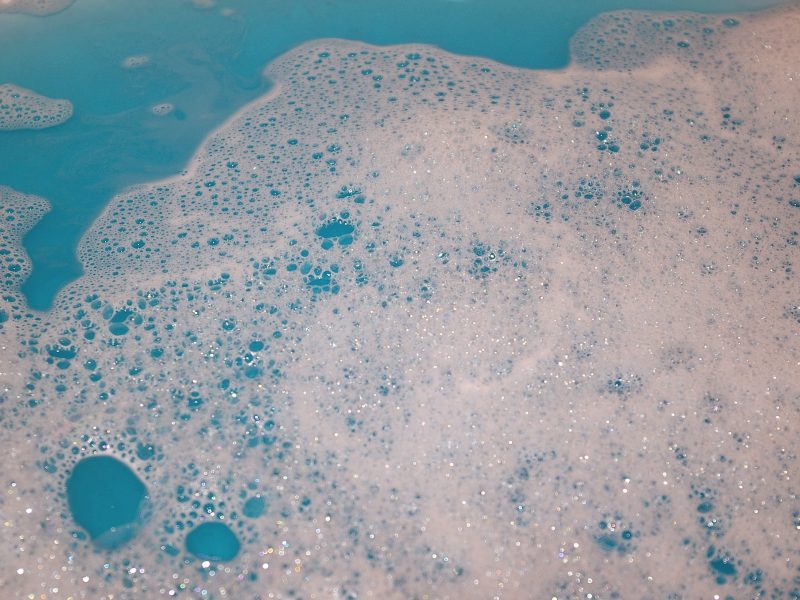Defoamers and Their Impact on Reducing Foam in Liquid Systems
Defoamers and Their Impact on Reducing Foam in Liquid Systems
Blog Article
The Role of Defoamers in Enhancing Product Top Quality and Efficiency
Defoamers offer as essential ingredients that mitigate this problem, ensuring smoother manufacturing operations while enhancing the aesthetic and useful qualities of the final items. The option of the proper defoamer can be critical to achieving ideal outcomes, elevating vital questions about formulation compatibility and performance metrics that merit further exploration.
Understanding Defoamers
Understanding the role of defoamers is vital for preserving item top quality throughout numerous sectors. Defoamers are chemical additives developed to reduce and stop the formation of foam in fluid systems, which can detrimentally impact processes such as mixing, filling, and surface tension. Lathering can cause inadequacies, item flaws, and endangered visual charm, making defoamers an essential part in producing operations.
In industrial applications, defoamers aid to boost item consistency and security. In the paint and finishings industry, foam can conflict with the application procedure and the final finish. In food and drink manufacturing, extreme foam can prevent bottling and packaging efficiency. The reliable use defoamers not just guarantees smoother production procedures however also adds to exceptional item performance.
Furthermore, the option and formula of a defoamer have to line up with specific application demands, such as compatibility with various other ingredients, performance under varying temperature and pH problems, and potential regulative restraints. Eventually, understanding defoamers' features and their importance in different formulas is crucial for enhancing manufacturing and guaranteeing the best quality end items.
Types of Defoamers
Defoamers can be classified into numerous kinds based on their composition and system of action. The main kinds consist of silicone-based, non-silicone natural, and inorganic defoamers.
Silicone-based defoamers are among the most efficient, mostly due to their capability to spread swiftly on the fluid surface area and interfere with foam formation. Their distinct chemical structure enables for exceptional stability, making them appropriate for high-temperature applications and environments with varying pH degrees.
Non-silicone natural defoamers, usually made up of natural oils or fats, are valued for their biodegradability and reduced toxicity. These are generally utilized in food and beverage applications where safety and security and ecological effect are vital.
Not natural defoamers, which consist of compounds like talc or calcium carbonate, act by boosting the thickness of the liquid, consequently minimizing foam security. They are commonly used in industrial processes where compatibility with other materials is not a problem.
Each kind of defoamer has distinctive benefits and restrictions, permitting tailored remedies relying on the certain lathering problems experienced in various applications. Recognizing these distinctions is important for optimizing performance and attaining preferred product top quality.
Applications Throughout Industries
Various industries utilize defoamers to improve product top quality and functional efficiency. In the food and drink industry, defoamers are crucial in procedures such as brewing and milk manufacturing to stop foam formation, which can bring about ineffectiveness and product incongruity. By regulating foam, producers can ensure far better yield and a more consistent product.
In the pharmaceutical sector, defoamers play a vital duty in the formulation of fluid medications, where extreme foam can impede blending and accurate dosing. Their usage helps preserve the honesty of the formulas and assists in smoother manufacturing processes.
The paint and layers market additionally relies upon defoamers to enhance the efficiency of products during application. By decreasing foam, these additives make sure a smoother finish and improve the visual high qualities of the end product.

Advantages of Using Defoamers
While the application of defoamers varies across sectors, their benefits continually improve item quality and process effectiveness. One substantial advantage is the decrease of foam development during making processes, which can otherwise cause manufacturing delays and variances in product high quality. By reducing foam, defoamers enable a this link smoother flow of products, assisting in a lot more effective operations and reducing the chance of tools breakdowns.
In addition, making use of defoamers can improve the appearance and appearance of final products. In sectors such as coatings, paints, and food handling, excessive foam can endanger the visual aesthetics and total high quality, while the appropriate defoamer application makes sure a consistent coating and desirable characteristics. Defoamers can contribute to cost financial savings by reducing waste throughout production and enhancing the use of raw materials.

Selecting the Right Defoamer
Selecting the best defoamer is vital for maximizing production processes and making certain product high quality. The selection of defoamer influences not only the efficiency of foam control however additionally the total performance features of the last product. Elements to consider consist of the sort of application, the chemistry of the formula, and the environmental conditions under which the product will certainly be made use of.
Various industries may call for certain defoamer types, such as silicone-based, organic, or polymeric defoamers. Understanding the compatibility of the defoamer with the key components is necessary to avoid damaging responses that could endanger product integrity. In addition, the defoamer's efficiency in various temperature levels and pH levels have to be examined to guarantee regular performance.
Examining the defoamer in small-scale applications can give important understandings right into its performance and viability. Factor to consider of regulative conformity, especially in food, drugs, and cosmetics, is paramount in choosing a defoamer. Inevitably, a detailed assessment of these variables will cause the option of a defoamer that not just regulates foam efficiently yet likewise enhances the top quality and performance of the check my blog last product.
Verdict

In final thought, defoamers are crucial ingredients that dramatically enhance item top quality and performance across various industries. The critical selection and application of defoamers lead to cost financial savings, maximized source use, and boosted customer complete satisfaction.
Foaming can lead to inadequacies, item problems, and endangered visual appeal, making defoamers a crucial part in producing operations.

Report this page